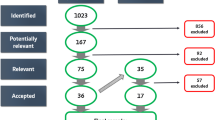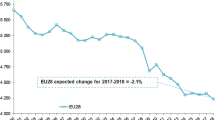Abstract
This paper examines reports on work carried out for the European Commission to devise a methodology for estimating the potential impact of smart grids on carbon emissions. It first identifies functionalities that enable carbon benefits to be realised. Each functionality on the demand side is assumed to be mirrored on the supply side, as when dynamic peak shifting ‘replaces’ flexible peak generation. Metrics are developed to describe the state of markets and to estimate customer response to demand response initiatives. Quantitative analysis identifies where the greatest scope for emissions reduction lies, while qualitative assessment indicates where to expect more or less impact from smart grid deployment. The impact of smart grid functionalities by 2020 is then modelled for six representative EU markets (Austria, France, Germany, Great Britain, Portugal and Spain), using a detailed pan-European market model and also a high-level ancillary services model. Three scenarios are developed: baseline, in which no smart grid rollout is assumed; feasible, based on what could be achievable in the light of technology developments and with supportive legislation; and an intermediate expected scenario, in which new technologies are introduced but nothing else changes. The findings indicate the potential for emissions reductions by 2020. They also show that the potential is very unlikely to be reached without regulatory support for user engagement in demand response and demand reduction, along with enabling technology and programmes. Development of regulatory frameworks that allow full advantage to be taken of the new technologies emerges as a challenge for smart grid development.


Similar content being viewed by others
Notes
Similar effects were seen by EnergyAustralia in a trial in New South Wales (Strengers 2010).
The second is to reduce the amount of spinning reserve needed for generation backup.
Energy industry consumption is defined as electricity consumed by transformation industries for heating, traction and lighting purposes. It excludes own-use by power plant, and electricity used for heat pumps, electric boilers and pumped storage.
There is some uncertainty about whether or not lignite should be included in the available capacity (in Germany and Spain), given its relative inflexibility compared to the other plant types. This means that the modelled emissions savings are higher, particularly for response, if lignite is included in the available fossil fuel capacity.
The additional emissions are relatively small and result from the loss in efficiency in part-loading the plant.
The additional emissions are larger as the plant has to produce at least at its minimum stable generation.
Eighty per cent of the reserve potential is assumed to be held for the provision of the ancillary services, with the remaining 20 % used for dynamic peak shifting in the detailed electricity model, as noted above.
References
AECOM (2011) Energy demand research project: final analysis. Report for Ofgem by AECOM Ltd, London. http://www.ofgem.gov.uk/Sustainability/EDRP/Documents1/Energy%20Demand%20Research%20Project%20Final%20Analysis.pdf. Accessed 26 Apr 2013.
Allcott, H. (2011). Rethinking real time electricity pricing. Resource and Energy Economics, 33, 820–842.
Boardman, B. and Palmer, J. (2003) Consumer Choice and Carbon Consciousness for Electricity (4CE) final report, Environmental Change Institute, University of Oxford. http://www.electricitylabels.com/downloads/4CE_Final_Report.pdf. Accessed 26 Apr 2013.
Boshell, F. and Veloza, O.P. (2008) Review of Developed Demand Side Management Programs Including Different Concepts and their Results. Proceedings, Transmission and Distribution Conference and Exposition: Latin America, 2008 IEEE/PES.
Darby, S. (2010). Smart metering: what potential for householder engagement? Building Research and Information, 38(5), 442–457.
DECC (2009). The UK Low Carbon Transition Plan. National strategy for climate and energy. London: Department of Energy and Climate Change.
EC (2011) Communication from the Commission to the European Parliament, the Council, the European Economic and Social Committee and the Committee of the Regions. Smart Grids: from innovation to deployment. Paper COM (2011) 202 final, adopted 12.4.2011. European Commission, Brussels http://eur-lex.europa.eu/LexUriServ/LexUriServ.do?uri=COM:2011:0202:FIN:EN:PDF. Accessed 26 Apr 2013.
ECT Smart Grid (2010) Functionalities of smart grids and smart meters. European Commission Taskforce on Smart Grids, Expert Group 1.
Ehrhardt-Martinez, K., Donnelly, K. A., & Laitner, J. A. (2010). Advanced metering initiatives and residential feedback programs: a meta-review for household electricity-saving opportunities. Washington, DC: American Council for an Energy-Efficient Economy.
ETP (2008) Smart Grids. Strategic deployment document for Europe’s electricity networks of the future, European Technology Platform. ftp://ftp.cordis.europa.eu/pub/technology-platforms/docs/smartgrids-sdd-draft-25-sept-2008_en.pdf.
Faruqui, A., & Sergici, S. (2010). Household response to dynamic pricing of electricity: a survey of 15 experiments. Journal of Regulatory Economics, 38, 193–225.
Grünewald, P. (2011) Consumer capacity charging: the effect of ‘not paying for energy’ on an active demand side. Conference, ‘Energy and People: futures, complexity and challenges’, Oxford, September 20–21, 2011.
Hull, L. (2010) Evaluating the Business Case for Micro Demand Response and Energy Saving. International Energy Agency Demand-Side Management Programme Task XIX: Micro Demand Response & Energy Saving Products. Version 1, October 2010.
Lampaditou, F. and Leach, M. (2005) Evaluating participation of residential customers in demand response programs in the UK. Proceedings, ECEEE summer study, paper 6,064.
McKenna E., Ghosh K. and Thomson M. (2011) Demand response in low-carbon power systems: a review of residential electrical demand response projects. 2nd International Conference on Microgeneration and Related Technologies, Glasgow, UK, 4th-6th April.
Owen, G. and Ward, J. (2010) Smart Tariffs and Household Demand Response for Great Britain. Sustainability First, March 2010.
Palmer, J. and Cooper, I. (2011) Great Britain’s Housing Energy Fact File http://www.decc.gov.uk/assets/decc/11/stats/climate-change/3224-great-britains-housing-energy-fact-file-2011.pdf. Accessed 26 Apr 2013.
Pöyry (2010) Wind energy and electricity prices. Exploring the ‘merit order’ effect. A literature review by Pöyry for the European Wind Energy Association (EWEA). http://www.ewea.org/fileadmin/ewea_documents/documents/publications/reports/MeritOrder.pdf. Accessed 26 Apr 2013.
SGCC (2011) Excellence in consumer engagement. Smart Grid Consumer Collaborative. http://smartgridcc.org/sgccs-excellence-in-consumer-engagement-study. Accessed 26 Apr 2013.
Strengers, Y. (2010). Air-conditioning Australian households: The impact of dynamic peak pricing. Energy Policy, 38(11), 7312–7322.
Strömbäck, J., Dromacque, C., and Yassin, M.H. (2011) The potential of smart meter enabled programs to increase energy and systems efficiency: mass pilot comparison. A report for the European Smart Metering Industry Group. VaasaETT, Global Energy Think Tank.
VaasaETT, Pöyry & ECI (2012). Methodologies to measure the potential of Smart Grids for greenhouse gas reductions (SG4-GHG). Final report to the European Commission Directorate General, Information Society and Media.
Valocchi, M., Juliano, J., & Schurr, A. (2009). Lighting the way. Understanding the smart energy consumer. New York: IBM.
Acknowledgments
This paper is based on work supported by the European Commission Directorate General Information Society and Media, which is gratefully acknowledged. Sarah Darby would also like to acknowledge support from the UK Engineering and Physical Sciences Research Council via two projects: SUPERGEN HiDEF (Highly Distributed Energy Future) and ADEPT (Advanced Dynamic Energy Pricing and Tariffs). The referees made useful suggestions to improve clarity. All views and any remaining errors are the authors’ own.
Author information
Authors and Affiliations
Corresponding author
Rights and permissions
About this article
Cite this article
Darby, S., Strömbäck, J. & Wilks, M. Potential carbon impacts of smart grid development in six European countries. Energy Efficiency 6, 725–739 (2013). https://doi.org/10.1007/s12053-013-9208-8
Received:
Accepted:
Published:
Issue Date:
DOI: https://doi.org/10.1007/s12053-013-9208-8




